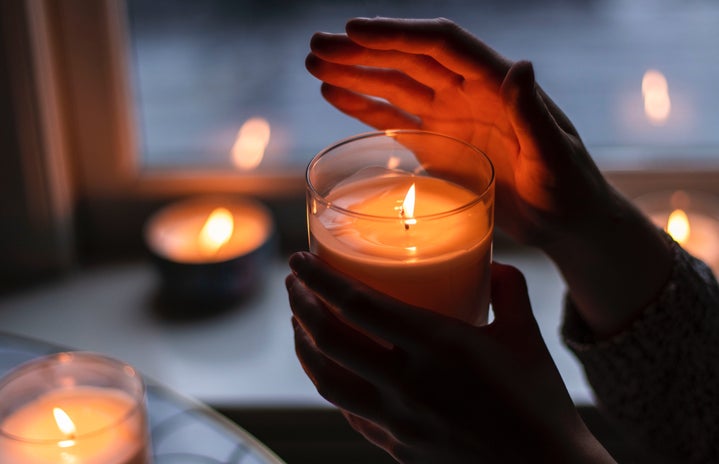Oh, the scented candles. We love to use them to destress, when we have company coming over, or when we just want to create a more homey vibe. But did you know that those same candles that create such delicious scents are slowly damaging your body? Between the dreaded fragrance oils, the waxes and the wicks themselves, burning scented candles releases a torrent of toxins into your lungs.
Fragrance oil is often brought up as the number one culprit. A list of over 1500 chemicals can be contained in fragrance oil, even when you only see the words “fragrance oil” on the ingredient list. Scary, right? We don’t even know what we are putting into our bodies. Or on them, for that matter. In this study, a connection between artificial air fresheners and dermatitis was made. Artificial fragrances are contributing to people developing skin conditions.
What’s worse, these same artificial fragrances and air fresheners were found to cause cancer, asthma and kidney damage. Dr Axe, a doctor that I turn to for advice on holistic living, explains that “some of the worst toxic ingredients used in lotions, shampoos, laundry detergents, cleaning products and so much more include synthetic scents, often listed on labels as the elusive ‘fragrance.’” The products that you are using every single day are really damaging your body, and fragrance oil is the main offender.
So you just learned the danger of fragrance oil alone… But did you know that candle wax and metal cored wicks are just as bad? A peer reviewed study published by the United States Environmental Protection Agency shows how burning unscented paraffin wax candles and incense (without even touching on the damage caused by burning and inhaling candle dyes or fragrance oils) can be compared to smoking cigarettes. To be specific, some things found in burning candles are pollutants such as acetone, benzene, lead and soot.
So, you want your home to smell yummy but you don’t want to damage your body at the same time. There is a way to get the best of both worlds, and it’s time for you to make the change.
First off, you can start by making a small switch to candles made with natural ingredients, like beeswax or coconut wax. This eliminates any toxins that you could inhale from the burning of paraffin waxes found in most candles. However, even these candles may be scented with fragrance oils or have metal wicks.
A next step would be ditching the fragrance oils all together. Candles made with natural scents, such as essential oils or other plant-based materials, will help take those toxins out of the air and can actually give you some other therapeutic benefits that fragrance oil can’t.
If you want to eliminate all toxins that come from burning candles, I’m afraid to say that you will just have to stop using them. This doesn’t mean that you have to give up those great scents! Essential oil diffusers can make your home smell amazing without the nasty toxins that candles release. What’s even better? With the growing popularity of essential oils, diffusers and essential oils aren’t hard to find. However, quality does matter. Many essential oils found in malls or drug stores can be filled with the same synthetic scents that scented candles use. Ensure that your essential oils are marked as Certified Pure Therapeutic Grade (CPTG) to know that they’ve been third party tested for purity and contain no synthetic fragrances.
Are you ready to join the growing amount of people who are choosing natural alternatives over synthetic scents and fragrance oils? Skip those cheap three-wicks next time you go to the mall and consider a higher quality of wax, or just choose another method altogether! It’s time to start being smart about what we’re putting in our bodies.
Want to start reducing your toxic load and invest in some therapeutic grade essential oils? Contact Sarah Nagus on Facebook or at sarah.nagus@gmail.com to learn more!
Related articles:
- We Tried Essential Oils for Sleeping and Here’s What Happened
- 10 Body Positive AF Instagram Accounts To Start Your New Year Right
- Get GLOWING: 5 Tips For Your Best Skin
Want more HCW? Check us out on social media!


